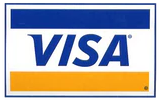Contents
-
Types of Chains
-
Supplies and Tools
-
Transforming Tangled to Timeless: A Necklace Repair Journey Unveiled!
-
Tips to Prevent Future Breaks
A necklace is not just a piece of jewelry; it holds sentimental value, adds a touch of elegance to any outfit, and often carries memories of special occasions. Therefore, when a necklace breaks, it can be incredibly frustrating and disheartening. However, fear not! With a few simple steps, you can repair your broken necklace and prevent future breaks, allowing you to continue wearing and cherishing it for years to come.
Types of Chains
Different necklaces are made with various types of chains, each requiring specific repair techniques. Let’s explore some common types of chains and the tools you’ll need for their repair:
- Herringbone Chain: This sleek, flat chain is prone to kinking or twisting. To fix a herringbone chain, gently straighten the kink using your fingertips or small jewelry pliers.
- Box Chain: A box chain consists of square links that can sometimes get twisted or break. Use small jewelry pliers to carefully untwist the chain or replace broken links with jump rings.
- Cuban Chain: This chain features interlocking links with a rope-like texture. If a link breaks, you can repair it by using jump rings or replacing the broken link with a new one.
- Rope Chain: A rope chain is known for its twisted appearance, making it prone to tangling. Carefully untangle the chain using your fingers or small jewelry pliers.
- Cable Chain: With its simple round or oval links, the cable chain is relatively sturdy. However, if a link breaks, you can fix it by using jump rings or a chain extender.
Supplies and Tools
If you are wondering how to fix a thin necklace chain, you will need to gather the following supplies and tools for the repair process:
- Jewelry pliers: These versatile pliers will help you manipulate and fix the chain links.
- Jump rings: These small metal rings are used to repair broken links or attach clasps.
- Lobster clasp: A lobster clasp is a common type of fastener for necklaces and can be replaced if damaged.
- Chain extender: A chain extender allows you to adjust the length of your necklace and can be useful if the chain is too short.
- Small jewelry wire cutters: These cutters are essential for removing damaged links or jump rings.
Transforming Tangled to Timeless: A Necklace Repair Journey Unveiled!
Before you begin repairing your broken necklace, carefully assess the damage. Is a link broken? Is the chain twisted or tangled? Once you’ve identified the problem, gather the necessary supplies and tools to restore your necklace’s beauty with precision.
-
Assessing Necklace Damage for Repair
To repair a necklace, you must first assess the damage. If a link is broken, use small jewelry pliers to remove the damaged link. You can then either replace it with a jump ring or a new link if available. If the chain is tangled, gently work through the tangles using your fingers or small jewelry pliers until it is straightened.
-
Essential Supplies for Necklace Repair
In addition to the supplies mentioned earlier, you may also need additional tools like jewelry glue or a small jeweler’s torch for more complex repairs. These tools are helpful if you need to solder broken links or mend delicate gemstone settings. However, for most simple repairs, the basic supplies mentioned earlier should suffice.
-
Restoring Necklace Beauty with Precision
Once you have repaired the broken link or untangled the chain, it’s time to restore your necklace’s beauty. Use the jewelry pliers to reattach the jump ring or replace the broken link, ensuring a secure connection. If necessary, replace the lobster clasp or use a chain extender to adjust the necklace’s length. Take your time and work with precision to ensure a seamless repair.
Tips to Prevent Future Breaks
To ensure the longevity of your necklace and prevent future breaks, it is crucial to provide regular maintenance and care. Here are a few expert tips on how to fix a necklace and keep it in excellent condition:
- Store your necklace separately: To prevent tangling or damage, store each necklace individually in a soft pouch or jewelry box.
- Avoid exposure to chemicals: Remove your necklace before swimming, bathing, or using cleaning products that may contain harsh chemicals.
- Handle with care: Avoid pulling or tugging on your necklace forcefully, as this can stress the chain and lead to breakage.
- Regularly inspect your necklace: Check your necklace for any signs of damage or weak links. If you notice any issues, address them promptly to prevent further damage.
- Get expert cleaning and maintenance: Taking your necklace to a professional jeweler for periodic maintenance. They can inspect the necklace thoroughly and make any necessary repairs or adjustments.
Final Thoughts
A broken necklace doesn’t have to be the end of its story. With the right tools, supplies, and a little patience, you can revive your cherished necklace and continue wearing it with pride. By taking proper care of your necklace and addressing any issues promptly, you can extend its lifespan and keep it looking beautiful for years to come.
ARSIS | Baroque Pearl OT-Shaped Clasp Y Necklace
$70.00
DYQ JEWELRY | Phoenix Silver & Gold Pendant
$780.00
FANCIME | Mens Gold Plated Beveled Cross Sterling Silver Necklace
Original price was: $129.00.$109.00Current price is: $109.00.
FANCIME | "Heart" Gemstone Sterling Silver Necklace
$129.00
PAVOI | Butterfly Pendant
$14.00
PAVOI | Cubic Zirconia Cross Pendant
$12.00















